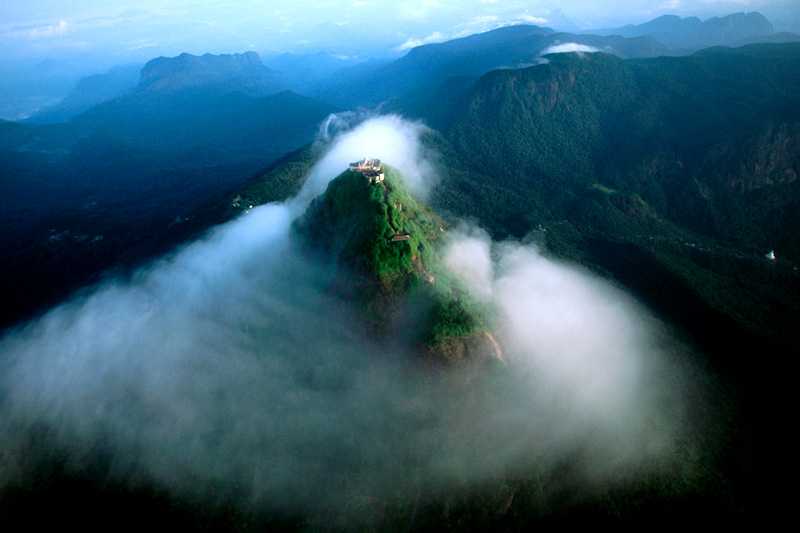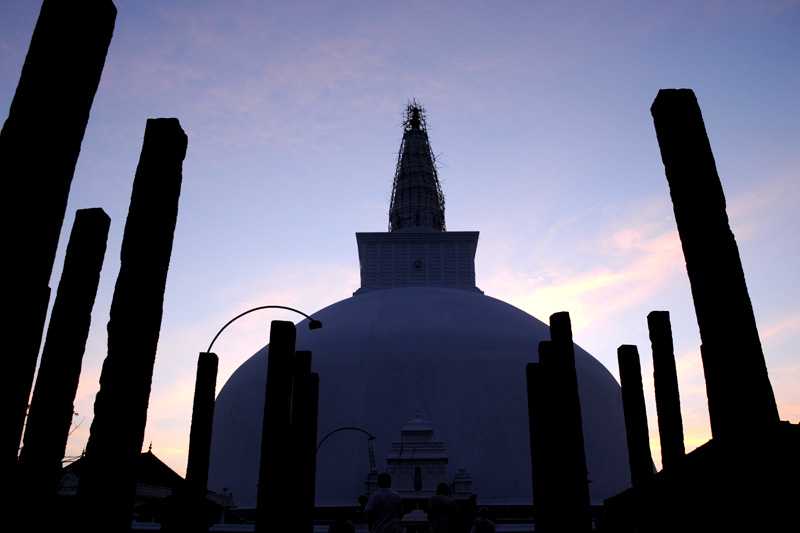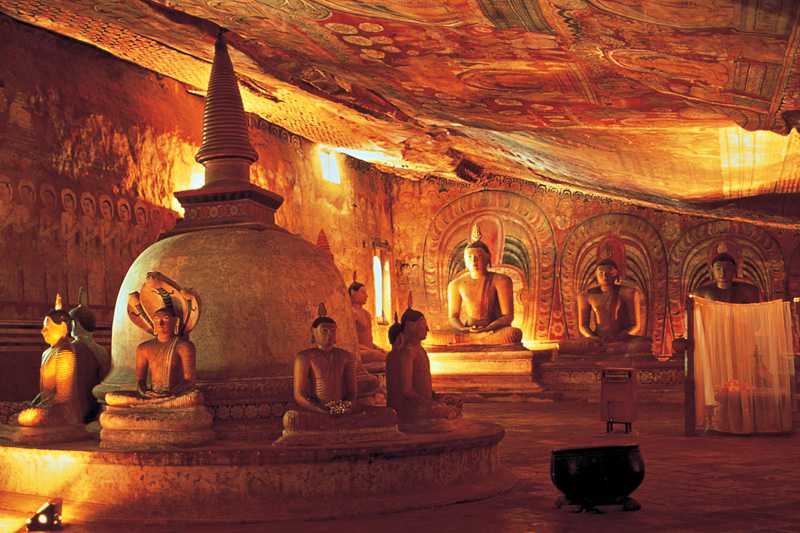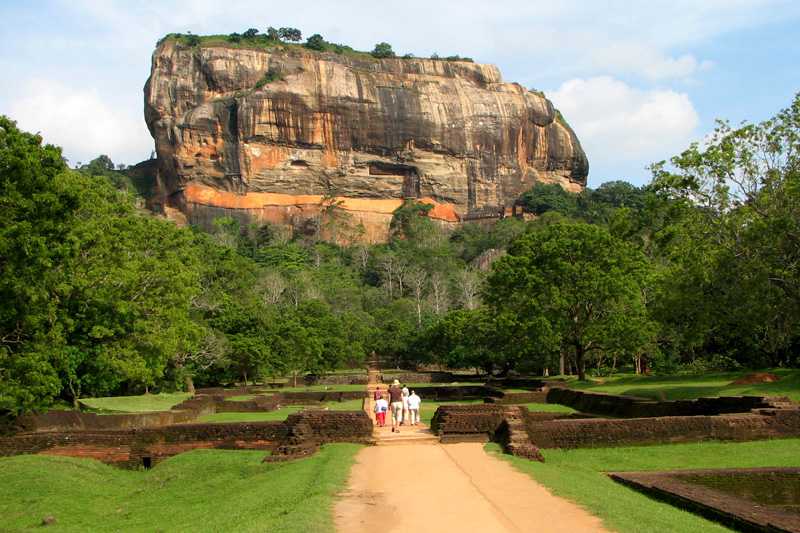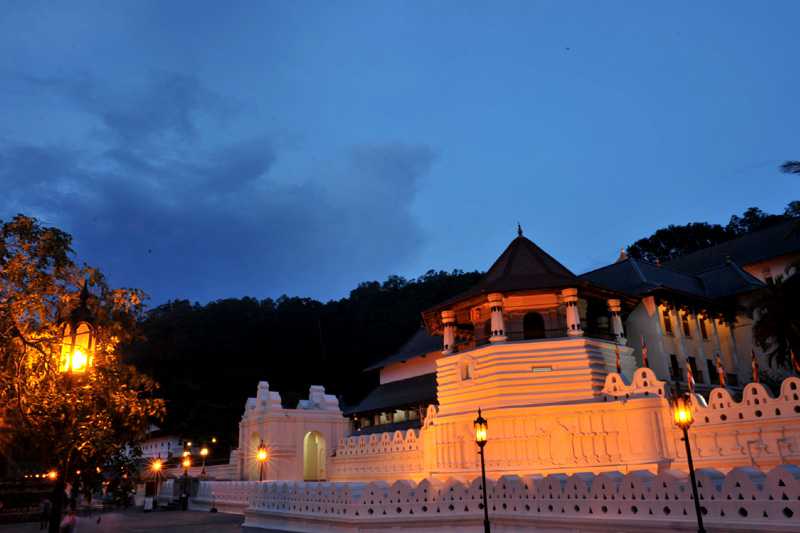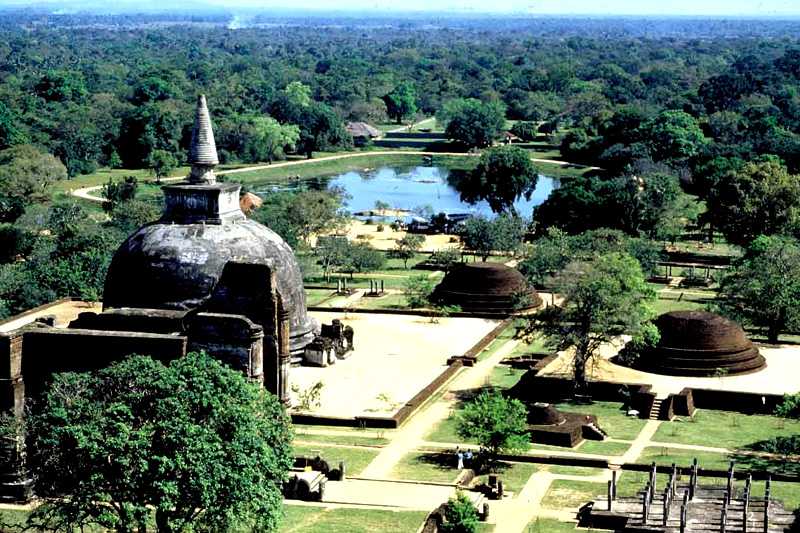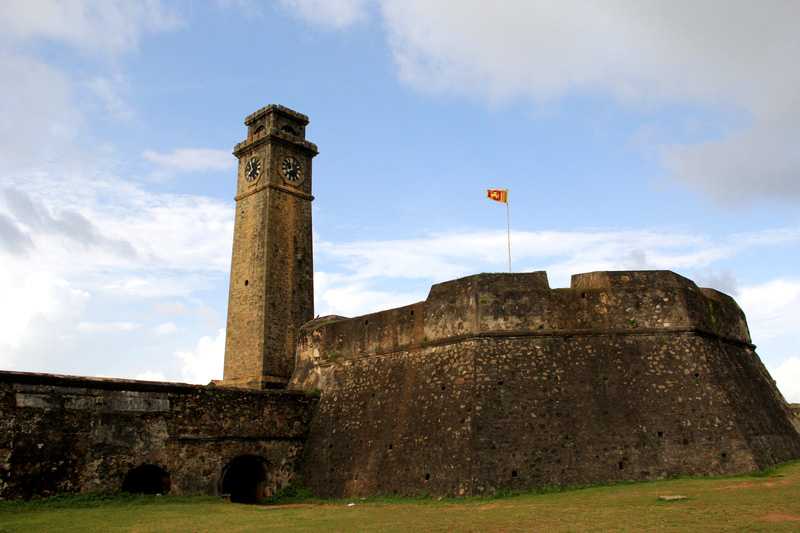Sinharaja Forest Reserve
Sinharaja Forest Reserve is a national park and a biodiversity hotspot in Sri Lanka. It is of international signifi cance and has been designated a Biosphere Reserve and World Heritage Site by UNESCO.
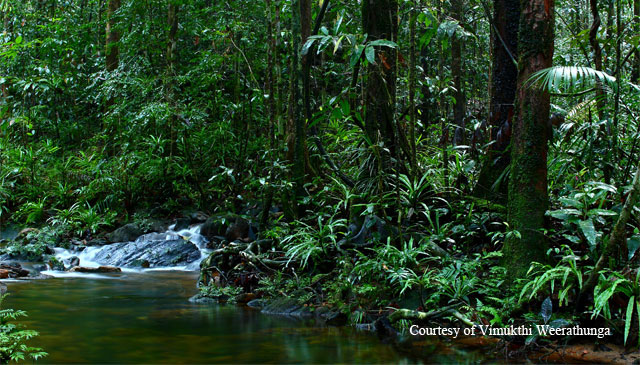
The hilly virgin rainforest, part of Sri Lanka’s lowland rain forests eco region, was saved from the worst of commercial logging by its inaccessibility, and was designated a World Biosphere Reserve in 1978 and a World Heritage Site in 1988. The reserve’s name translates as Kingdom of the Lion. It is a treasure trove of endemic species, including trees, insects, amphibians, reptiles, birds and mammals. Because of the dense vegetation, wildlife is not as easily seen as at dry-zone national parks such as Yala. There are about 3 elephants and the 15 or so leopards are rarely seen. The commonest larger mammal is the endemic Purplefaced Languor. An interesting phenomenon is that birds tend to move in mixed feeding flocks, invariably led by the fearless Greater Racket-tailed Drongo and the noisy Orange-billed Babbler. Of Sri Lanka’s 26 endemic birds, the 20 rainforest species all occur here, including the elusive Redfaced Malkoha, Green-billed Coucal and Sri Lanka Blue Magpie. Reptiles include the endemic Green pit viper and Hump-nosed vipers, and there are a large variety of amphibians, especially tree frogs. Invertebrates include the endemic Common Bird wing butterfly and the inevitable leeches. Flora: - The vegetation of Sinharaja may be described either as a tropical lowland rain forest or tropical wet evergreen forest. Some striking characteristics of the forest are the loftiness of the dominant trees, the straightness of their bole, the abundance of regeneration and the diversity of species. Average height of the trees varies between 35 -40 metres, some rise even up to 50 metres. The vegetation of Sinharaja is that of humid wet evergreen forest type with a high degree of endemism. In fact some families such as Dipterocarpaceae show an endemism more than 90%. The untapped genetic potential of Sinharaja flora is enormous. Out of the 211 woody trees and lianas so far identifi ed within the reserve 139 (66%) are endemic. Similarly, high levels of endemism are.
perhaps true for the lower plants like ferns, epiphytes as well as out of 25 general endemic to Sri Lanka 13 are represented in Sinharaja. The total vegetation density, including trees, shrubs, herbs and seedlings has been estimated to be around 240,000 individuals per hectare, of which 95% comprise individuals of the ground layer bellow 1 metre in height.
Fauna: - Studies on the fauna of Sinharaja have revealed that there is a high degree of endemism among the butterflies, fi sh, amphibians, reptiles, birds and mammals being greater than 50%. There have been reports of sightings of a few animals including elephants in the eastern Sector. The most common deer species is the Sambhur and the barking deer are also found within the reserve. Leopards are very seldom sighted, but their frequent presence has been confi rmed by tracks and other signs. Badger Mongoose and the Golden Palm Civet have been occasionally sighted. The most commonly seen primate is the Purple - faced Leaf Monkey. Although the elephants are said to be common in the past, there have been reports of sightings in 2008. Out of the Birds recorded in the western sector of the reserve, 72% were resident non-endemic and 13% migrants. One of the most interesting and colourful spectacles to be found in the Sinharaja is the presence of mixed species of foraging bird flocks, a phenomenon commonly found in rain forests and a total of 100 such flocks were systematically observed, and studies have revealed that some flocks contained 48 species including 12 endemic species. The rare endemic birds to be seen in Sinharaja are the Red-faced Malkoha, the Sri Lanka Blue Magpie, the Ashy-headed Babbler, and the White-headed Starling and the Green-billed Coucal the rarest of Sri Lankan birds. Agamids are the best represented group of reptiles, the most common being the Green Garden Lizard. Of Special signifi cance are the sightings of Calottes’ Liolepis an arboreal species, the rarest of all agamid found in the island. The only Tortoise recorded in the reserve is the Hard-shelled Terrapin, while of the species of skinks, the spotted skink can often be seen. Among the snakes the endemic Green Pit Viper and Hump-nosed Viper are commonly found in this forest. The amphibians are fairly well represented in the reserve and nine endemic species have been identifi ed. The endemic Torrent toad and the common house toad are found in most streams and marshes. The Wrinkled Frog and the Sri Lankan Reed Frog is also found in the Sinharaja.







